New Zealand: Whitey wood
Now that you’ve had some more glimpses of Texas in the early spring, let me go back to New Zealand with another set of photographs from my summer (in the Southern Hemisphere) trip there. You’ve gotta hand it to a country that so sensibly calls its north island North Island, its south island South Island, and its tree with white bark whitey wood, known natively as māhoe and scientifically as Melicytus ramiflorus. I photographed this answer to America’s birches and sycamores on February 8th at Tiritiri Matangi.
© 2015 Steven Schwartzman
Written by Steve Schwartzman
May 3, 2015 at 5:03 AM
Posted in nature photography
16 Responses
Subscribe to comments with RSS.

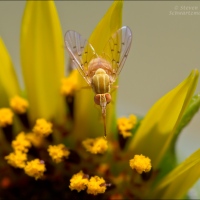
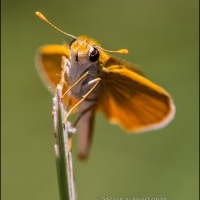
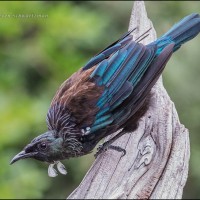
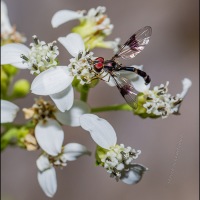
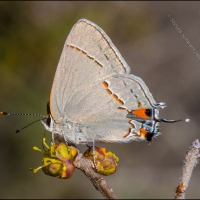
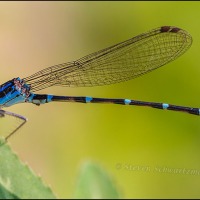

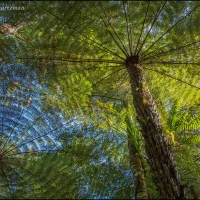
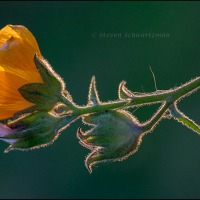
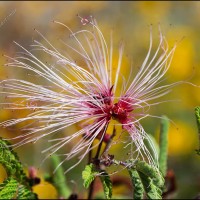
I guess we like things plain and simple.
Gallivanta
May 3, 2015 at 5:25 AM
“Plain and simple” definitely has its place, and I never was in any doubt about which of the two main islands someone was talking about.
One curiosity, though, is that the northernmost parts of the South Island are further north than the southernmost parts of the North Island (particularly Wellington), something I observed from my airplane window when flying from Auckland to Christchurch
Steve Schwartzman
May 3, 2015 at 3:22 PM
Hmmm….perhaps not surprising! Another earthquake today. This time near Wanaka. At this rate we may be parallel to the North Island before we know it. It was a mag 6 and only 5km deep. Fortunately not in a populated region. Everyone and everything seems okay. Of course, I don’t know that anyone has asked the sheep how they felt.
Gallivanta
May 4, 2015 at 1:59 AM
I know how seriously you take earthquakes, but you’re still funny in saying “At this rate we may be parallel to the North Island before we know it.” I’ll answer in kind and say I hope Wanaka wasn’t aspiring to move north into Mount Aspiring National Park.
Steve Schwartzman
May 4, 2015 at 6:44 AM
Now there’s a thought; aspirational earthquakes!
Gallivanta
May 4, 2015 at 9:05 AM
And a very down-to-earth sort of aspiring, too. Let’s hope it doesn’t amount to much.
Steve Schwartzman
May 4, 2015 at 9:26 AM
Yes, otherwise we may have to speak of things in terms of “up market”.
Gallivanta
May 4, 2015 at 8:18 PM
The European settlers really didn’t have much imagination. But they were practicable. The mahoe trees are native to our lands:
Melicytus ramiflorus (māhoe or whiteywood) is a small tree of the family Violaceae endemic to New Zealand.
It grows up to 10 metres high with a trunk up to 60 cm in diameter, it has smooth, whitish bark and brittle twigs. The dark-green “alternate” leaves are 5-15 cm long and 3-5 cm wide and their edges are finely serrated (although this feature is less pronounced in younger plants). The plants are dioecious and the small flowers are yellowish in colouration, between 3 and 4 mm in diameter and occur in fascicles, growing straight out from naked twigs- these flowers have a strong, pleasant fragrance. The berries are a striking violet colour when ripe and are more or less spherical with a diameter of between 3 and 4 mm. Flowering occurs in late spring ( southern hemisphere )- and on into summer while the berries appear later on in summer and also in autumn.
The berries of this small tree are eaten by a number of native birds, including Kererū and Tui, while geckos of the genus Naultinus have also been observed to supplement their primarily insectivorous diet with consumption of these berries. Māhoe is ubiquitous throughout lower altitude New Zealand forests and is frequently seen in areas of regenerating forest.
Raewyn's Photos
May 3, 2015 at 3:03 PM
Thanks for all that information about whitey wood. I was sorry not to see (and photograph) one of these trees with berries on it, even though February was the right time for that. Most likely the whiteywoods I encountered were male, or even if female weren’t mature enough to produce fruit. What I observed was so hit and miss but I’m glad to have seen as many things as I did.
Steve Schwartzman
May 3, 2015 at 3:28 PM
You are making me look more closely at my native bush. I have learnt so much, Thank you
Raewyn's Photos
May 3, 2015 at 3:31 PM
Isn’t that the way of it? Sometimes it takes an outsider to make you see familiar things differently.
Steve Schwartzman
May 3, 2015 at 3:36 PM
Absolutely. It makes us more aware of what is around us
Raewyn's Photos
May 3, 2015 at 3:36 PM
I like the way they have lined up in that cluster/clump. The variety of moss and lichen is also a nice addition to the picture. Nicely seen, Steve.
Steve Gingold
May 4, 2015 at 4:22 AM
Like you, Steve, I’m fond of those dark green and pale tan areas that break up the white of the whitey wood’s bark.
Steve Schwartzman
May 4, 2015 at 6:46 AM
It took me a while to figure out what was so striking about these. They remind me of poplar and birch, but I’ve never seen those trees with moss on them. Seeing white and green rather than white, gray, and brown, makes the whitey woods seem somehow magical, as though you could encounter little elves in their groves.
shoreacres
May 4, 2015 at 9:25 PM
The only elf in those groves was me!
The moss on the bark strikes me as unusual, too. Perhaps I should be green with envy.
Steve Schwartzman
May 4, 2015 at 10:21 PM